42 saturated fat on food labels
How to Read Nutrition Facts Labels the Right Way - GoodRx However, foods that contain less than 0.5 g per serving are allowed to list the trans fats as 0 g on a nutrition label, so consumption of these fats is still possible. Foods that may contain small amounts of trans fats include: Packaged baked goods. Ready-to-eat frozen meals. Refrigerated doughs. Fried foods. Margarine. Shortening Reading and Understanding Food Labels and Nutrition Info - Beaumont Health A one-percent reduction of saturated fat in your diet reduces your heart disease risk by three percent. Keep saturated fat to less then 15 grams per day. It is not required to list unsaturated fats (polyunsaturated and monounsaturated) on food labels. In general, unsaturated fats lower cholesterol. The healthiest unsaturated fat is canola oil.
Dietary fats explained: MedlinePlus Medical Encyclopedia 13.07.2020 · You also need fat to keep your skin and hair healthy. Fat also helps you absorb vitamins A, D, E, and K, the so-called fat-soluble vitamins. Fat also fills your fat cells and insulates your body to help keep you warm. The fats your body gets from your food give your body essential fatty acids called linoleic and linolenic acid. They are called ...
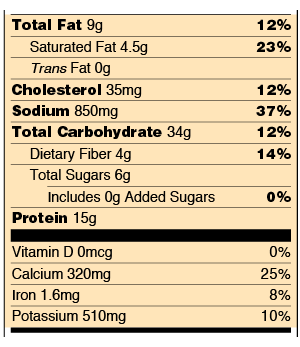
Saturated fat on food labels
PDF Read the Food Label To Choose Foods Lower in Saturated Fat Read the Food Label To Choose Foods Lower in Saturated Fat Food labels tell you what you need to know about choosing healthier options. Here's a food label for a carton of whole milk. Whole 1. Serving Size and Number of Servings The serving size is 8 fluid ounces (1 cup). There are two servings in this carton. 2. Amount Per Serving How to read food labels: MedlinePlus Medical Encyclopedia If a food has less than 0.5 grams of saturated fat in the serving size on the label, the food maker can say it contains no saturated fat. Remember this if you eat more than 1 serving. You should also pay attention to trans fats on any food label. These fats raise "bad" cholesterol and lower your "good" cholesterol. Food labels - NHS These labels provide information on the number of grams of fat, saturated fat, sugars and salt, and the amount of energy (in kJ and kcal) in a serving or portion of the food. But be aware that the manufacturer's idea of a portion may be different from yours. Some front-of-pack nutrition labels also provide information about reference intakes.
Saturated fat on food labels. Food Labels | CDC - Centers for Disease Control and Prevention 20.09.2022 · If you eat the whole thing, you are eating 8 times the amount of calories, carbs, fat, etc., shown on the label. Total Carbohydrate shows you types of carbs in the food, including sugar and fiber. Choose foods with more fiber, vitamins, and minerals. Choose foods with lower calories, saturated fat, sodium, and added sugars. Avoid trans fat. Understanding Food Nutrition Labels | American Heart Association Remember that the information shown in the label is based on a diet of 2,000 calories a day. You may need less or more than 2,000 calories depending upon your age, gender, activity level, and whether you're trying to lose, gain or maintain your weight. When the Nutrition Facts label says a food contains "0 g" of trans fat, but includes ... Daily Value on the New Nutrition and Supplement Facts Labels The Nutrition Facts label must list total fat, saturated fat, trans fat, cholesterol, sodium, total carbohydrate, dietary fiber, total sugars, added sugars, protein, and certain vitamins and ... 11 Foods That Are High In Saturated Fat - Parade: Entertainment ... 27.09.2022 · Red meat. Red meat can also be high in saturated fat, so be sure to read labels and look at the fat content. Or look for leaner cuts. According to the USDA, a lean cut of beef is a 3.5-ounce ...
Understanding Food Labels | The Nutrition Source | Harvard T.H. Chan ... Chile implemented the Law of Food Labeling and Advertising in 2016, comprised of mandatory front-of-package (FOP) warning labels, restrictions on child-directed marketing, and the banning of sales in schools of all foods and beverages containing added sugars, sodium, or saturated fats that exceeded set nutrient or calorie thresholds. [1] Reading Food Labels (for Parents) - Nemours KidsHealth Percent daily value is most useful for seeing whether a food is high or low in nutrients: A food with 5% or less of a nutrient is low in that nutrient. A food with 10%-19% of a nutrient is a good source of that nutrient. A food with 20% or more of a nutrient is high in that nutrient. The information on food labels is based on an average diet ... Trans Fats, Health and Nutritional Labeling of Foods The Food and Drug Administration (FDA) requires that total, saturated and trans fat (TF) and cholesterol contents of the products are listed on Nutrition Facts and Supplement Facts panels. The labeling requirements are based on scientific evidence that consumption of saturated fats and TF may raise low-density lipoprotein (LDL) levels and ... How to understand food labels | Eat For Health The Nutrition Information Panel on a food label offers the simplest and easiest way to choose foods with less saturated fat, salt (sodium), added sugars and kilojoules, and more fibre. It can also be used to decide how large one serve of a food group choice or discretionary food would be and whether it's worth the kilojoules.
How to Understand and Use the Nutrition Facts Label | FDA It's important to realize that all the nutrient amounts shown on the label, including the number of calories, refer to the size of the serving. Pay attention to the serving size, especially how ... 7 Nutrition Label Ingredients to Avoid - Walker Methodist Throughout this post, I am going to highlight seven food additives and ingredients to avoid and look out for when reading food nutrition labels. Trans-Fat Trans-fats are often added to food items to lengthen the shelf-life and prevent food from spoiling. PDF Eat Smart with Food Nutrition Labels - American Heart Association Compare labels when possible and . choose options with lower amounts of added sugars, sodium and saturated fat and no trans fat. Get enough of . beneficial nutrients. Eat foods with nutrients your body needs, like calcium, dietary fiber, iron, potassium . and Vitamin D. Understand % Daily Value. • The % Daily Value (DV) tells you the Food Labels: Fat & Cholesterol | Home & Garden Information Center The 2015 Dietary Guidelines for Americans recommends the following intakes of fat and cholesterol every day: total fat—20 to 35% of calories, depending on age and gender (65 grams for the 2,000-calorie intake level used in the Daily Value)*. saturated fat—less than 10% of calories**. trans fat— keep as low as possible.
3 Types of Foods High in Saturated Fat - Verywell Health 27.07.2022 · Saturated fat should be limited to no more than 10% of your daily calories. One gram of saturated fat is 9 calories. If you eat an average of 2,000 calories/day, you should limit your saturated fat intake to 22 grams/day (about 200 calories). That is roughly the equivalent of 3 tablespoons of butter or two 8-ounce hamburgers. Of course, less is ...
Easy Guide to Understanding Food Labels When You Have High ... - MyDoc 1. Choose products low in saturated fat, trans fat and cholesterol. When shopping for food, use the nutrition information panel to compare and choose products with lower fat, saturated fat and cholesterol content. Saturated fat is a type of fat that raises your total and LDL cholesterol and risk of heart disease, so intake should be limited.
Fats | Nutrition.gov HHS, Food and Drug Administration, Center for Food Safety and Applied Nutrition Read about saturated fat - what it is, where it is found, and how you can use the Nutrition Facts Label for reducing saturated fat in your diet.
PDF Food Label Tip: How to Choose Foods Low In Saturated Fat, Trans Fat ... of saturated fat and cholesterol. In general, 5% or less is low. Twenty % or more is high. Also choose foods with no or low amounts of trans fat. Compare these two food labels: Whole Milk Fat-Free Milk. Ft e. These food labels are for one serving of milk: 1 cup (8 ounces). Fat-free milk has the lowest % of saturated fat and cholesterol.
Nutrition Facts table formats - Food labels - Canadian Food … Although the Food and Drug Regulations (FDR) require the declaration of a Nutrition Facts table (NFt) on most prepackaged products, the information may be presented in a variety of different formats. Industry has considerable flexibility in presentation, and may choose from several different format "families". Within each format family, further choices of presentation style are …
Fat | Eat For Health Use food labels to compare foods and choose those with fewer trans fats. It is great for health to replace saturated and trans fats with mono and polyunsaturated fats. Source: Dietitians Australia (formerly Dietitians Association of Australia). Cholesterol. Cholesterol is a type of fat found in food, but also in our blood. Cholesterol has many ...
How To Read Food and Beverage Labels - National Institute on Aging At the top of the Nutrition Facts label, you will find the total number of servings in the container and the food or beverage's serving size. The serving size on the label is based on the amount of food that people may typically eat at one time and is not a recommendation of how much to eat. Read more about serving and portion sizes.
Food Labels 101: Understanding the Nutrition Facts Label Foods high in cholesterol can increase your risk for heart disease. So, look for foods low in cholesterol, such as those found in a plant-based diet. Fats - Saturated and Trans. If the label indicates that the food is high in saturated fat (no more than 20 grams total for the day), then it is not an ideal food for a heart healthy diet.
Reading Food Labels | ADA - American Diabetes Association Put food labels to work. The Nutrition Facts labels on foods are really the key to making the best choices. We'll cover the basics so that these labels make shopping easier for you. You've heard it all. From carb-free to low-carb, to whole and empty carbs, it's hard to know what it all means. Blood sugar highs and lows aren't always ...
Do Saturated Fats & Unsaturated Fats Equal Total Fats on Nutrition Labels? Nutrition labels are written in accordance with the Food and Drug Administration's Guide to Nutrition Labeling and Education Act (NLEA). One of the NLEA's rules is that if a given serving of your food contains less than 0.5g of a given macronutrient (including protein, carbohydrate, sugar, fat and fiber), the quantity of that nutrient can be listed as zero on the label.
Fat Content on Food Labels - Reading Between the Lines When it comes to listing fat on food labels, manufacturers are required to only list total fat and saturated fat. Some also voluntarily list monounsaturated and polyunsaturated fat, but it's unlikely you'll see trans fat listed.". The Mayo Foundation continued, "Still, you may be able to tell if a product contains trans fat, even if it ...
Interpreting Total Fat and Types of Fat on Food Labels - Nina Cherie ... Now, at the end of the day, since all high-fat foods tend to drive up calorie counts, it's typically recommended that you limit your intake of total fat to 25-35% of your daily calories. Of this amount, saturated fats and trans fats should comprise less than 7-10% and no more than 1%, respectively. At the very least, following these ...
Nutrition labels for drinks high in sugar, saturated fat to be rolled ... 16.08.2022 · These concerns came after Health Minister Ong Ye Kung said last week that food and beverage outlets will be required by the end of 2023 to include nutrition labels on their menus indicating drinks ...
How Do You Know Your Food's Nutrition Facts Label Is Accurate? The short answer. Manufacturers often confirm their nutrition numbers by matching their products as closely as possible to NIST's food reference materials, which contain precisely measured quantities of nutrients. NIST's measurements are accurate to within 2% to 5% for nutrient elements (such as sodium, calcium and potassium ...
How to Read Food Labels for Fats and Oils A Note on Ingredient Lists. Fats and oils can come from many sources, like animal fats, fish, seeds, plants, and nuts. Reading the ingredient lists on products will reveal the source of the fat. For oils and fats ingredient lists, fats and oils are referred to by their common names (e.g., "beef fat," "cottonseed oil").
Food labels - NHS These labels provide information on the number of grams of fat, saturated fat, sugars and salt, and the amount of energy (in kJ and kcal) in a serving or portion of the food. But be aware that the manufacturer's idea of a portion may be different from yours. Some front-of-pack nutrition labels also provide information about reference intakes.
How to read food labels: MedlinePlus Medical Encyclopedia If a food has less than 0.5 grams of saturated fat in the serving size on the label, the food maker can say it contains no saturated fat. Remember this if you eat more than 1 serving. You should also pay attention to trans fats on any food label. These fats raise "bad" cholesterol and lower your "good" cholesterol.
PDF Read the Food Label To Choose Foods Lower in Saturated Fat Read the Food Label To Choose Foods Lower in Saturated Fat Food labels tell you what you need to know about choosing healthier options. Here's a food label for a carton of whole milk. Whole 1. Serving Size and Number of Servings The serving size is 8 fluid ounces (1 cup). There are two servings in this carton. 2. Amount Per Serving



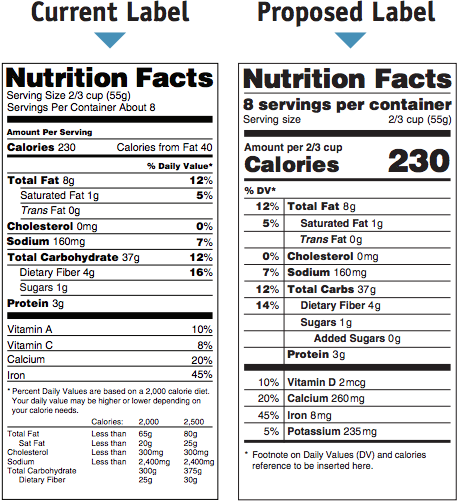
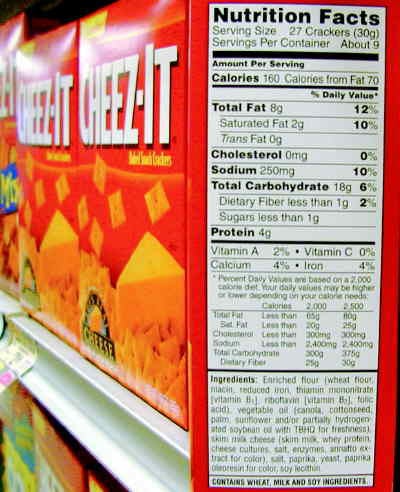

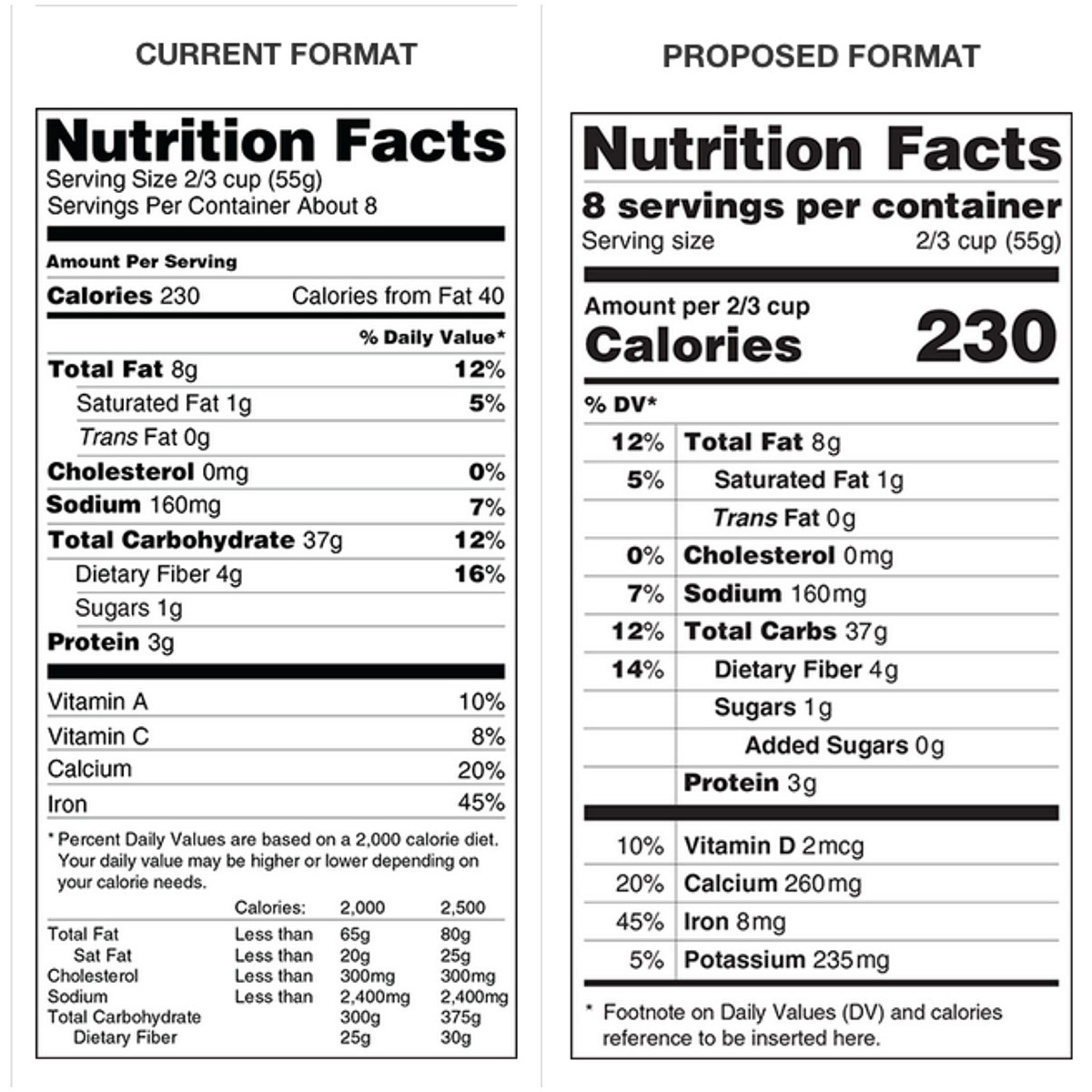
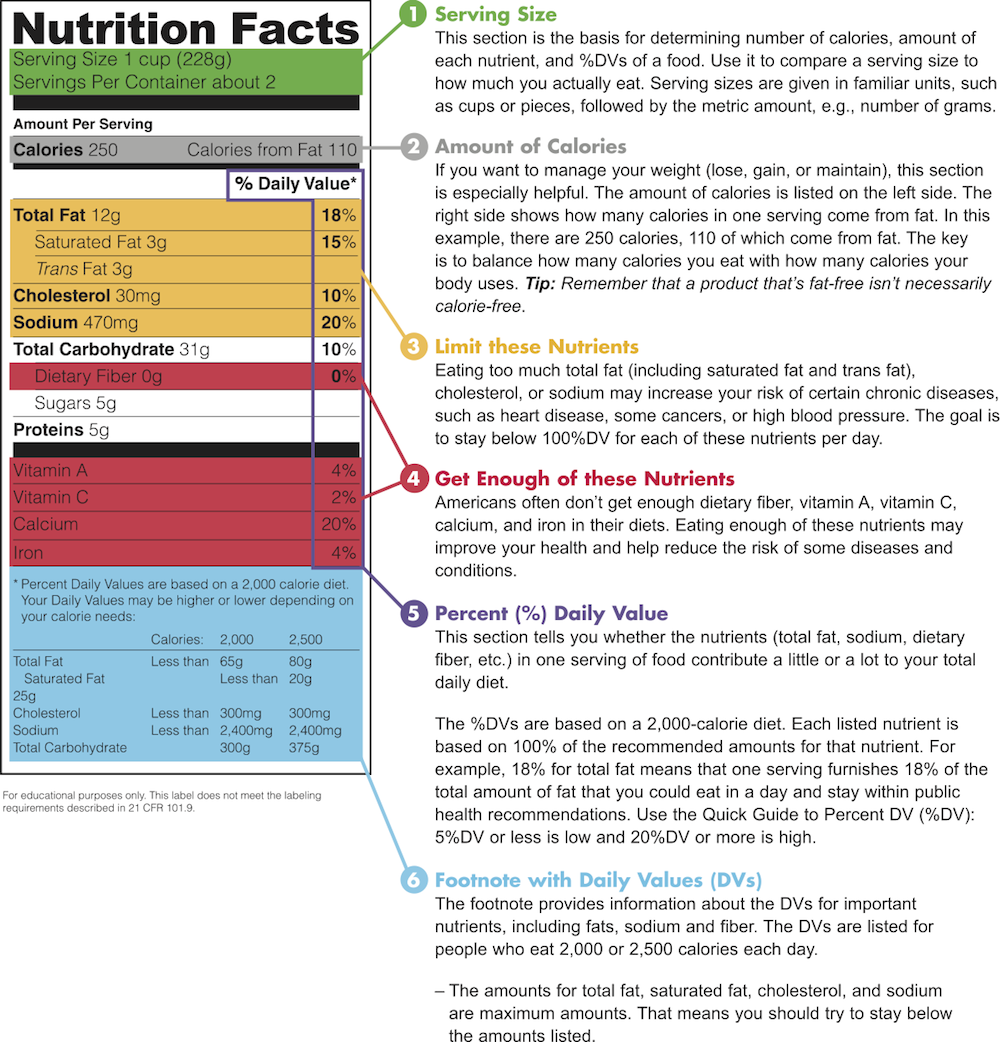
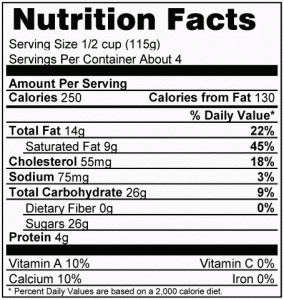


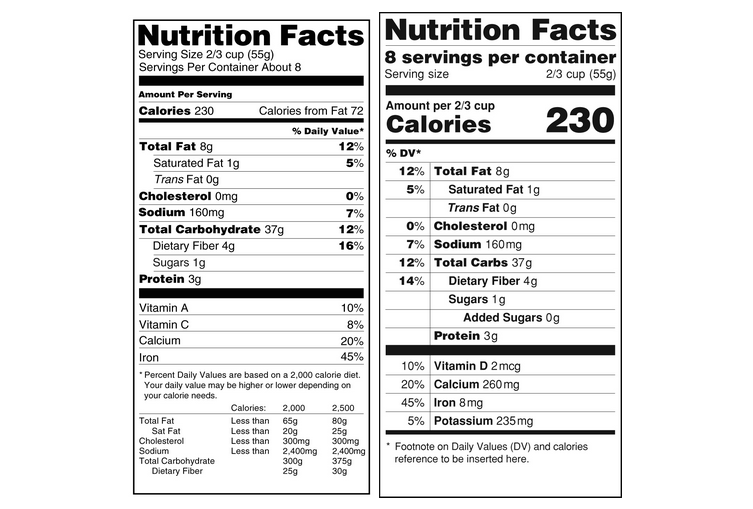
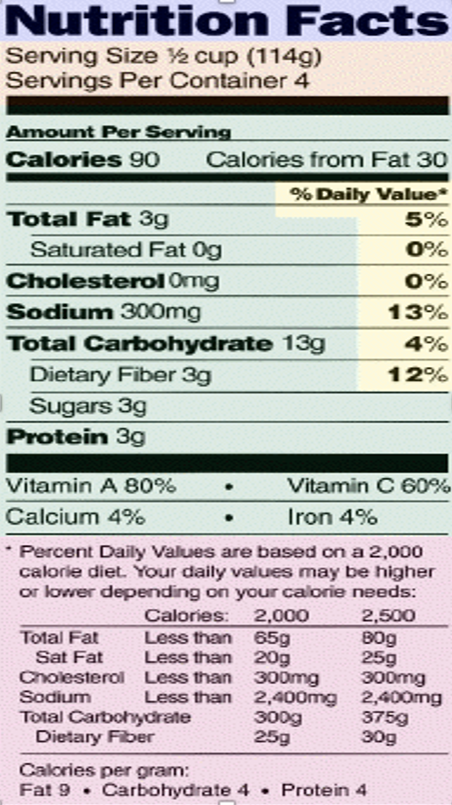






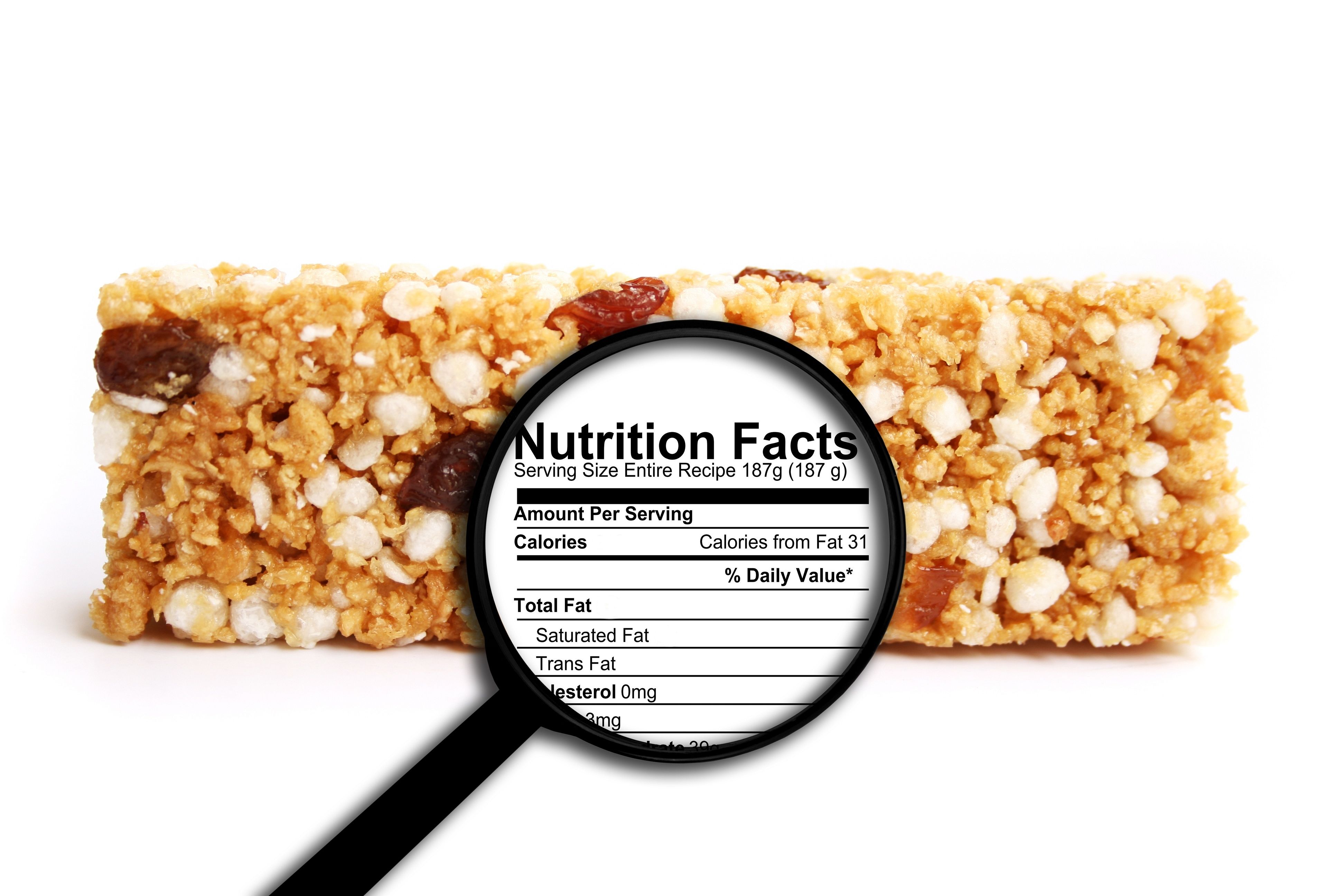

/cloudfront-us-east-1.images.arcpublishing.com/gray/OB55H4DMDJCPFHZ65IDU2JVZMY.png)
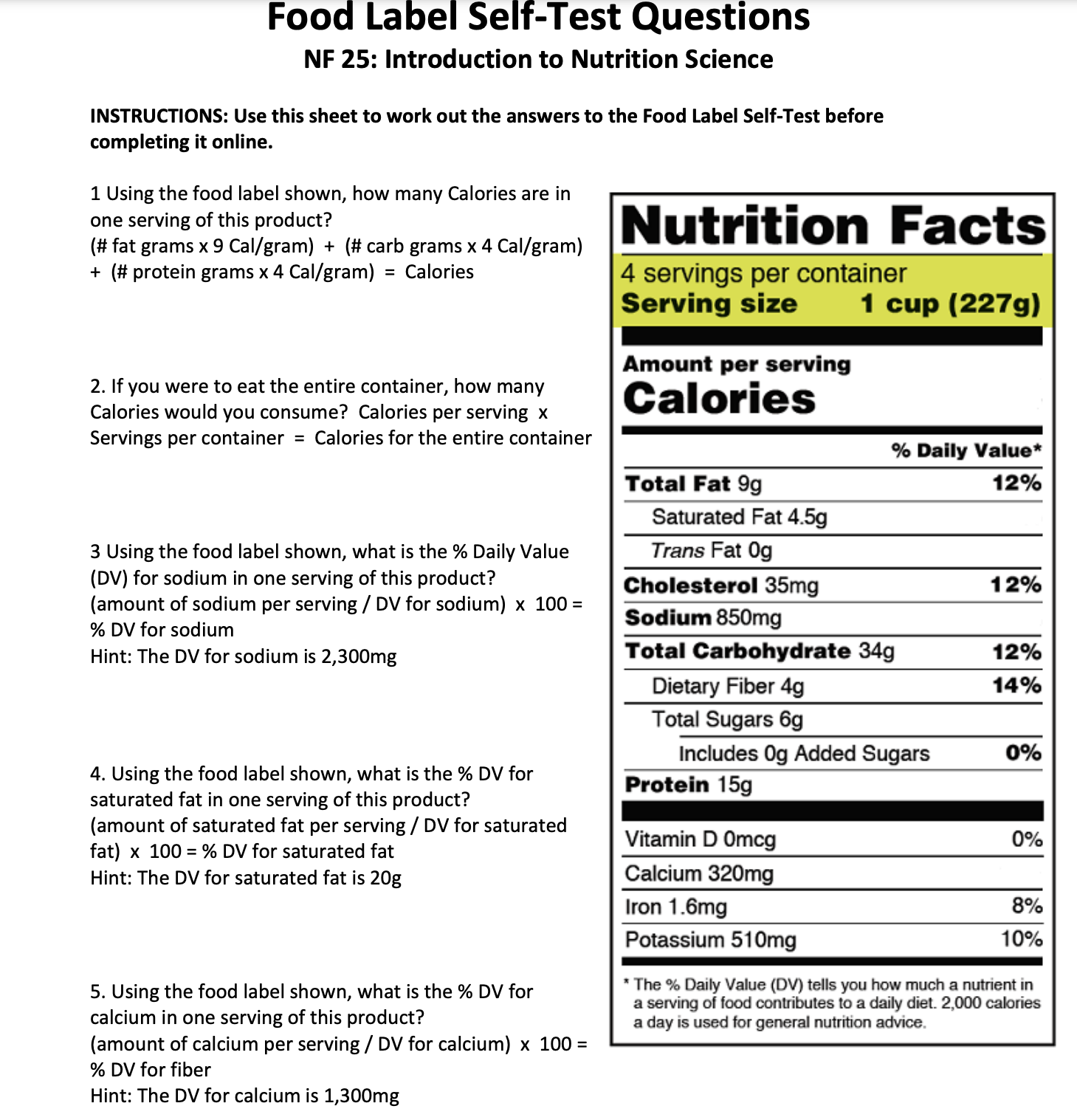
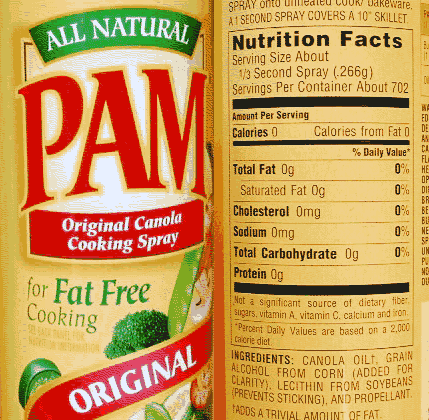
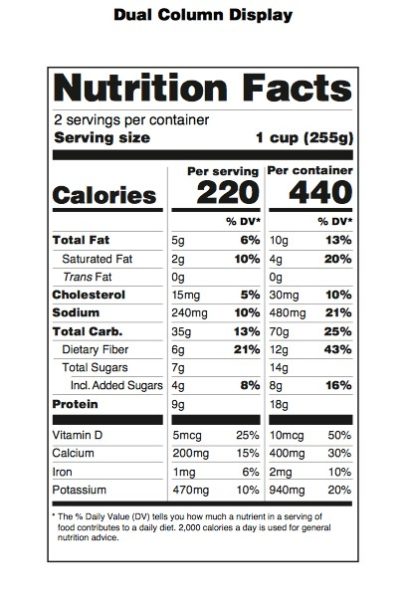


/Untitled-design-1--5755c3703df78c9b46903dab.jpg)


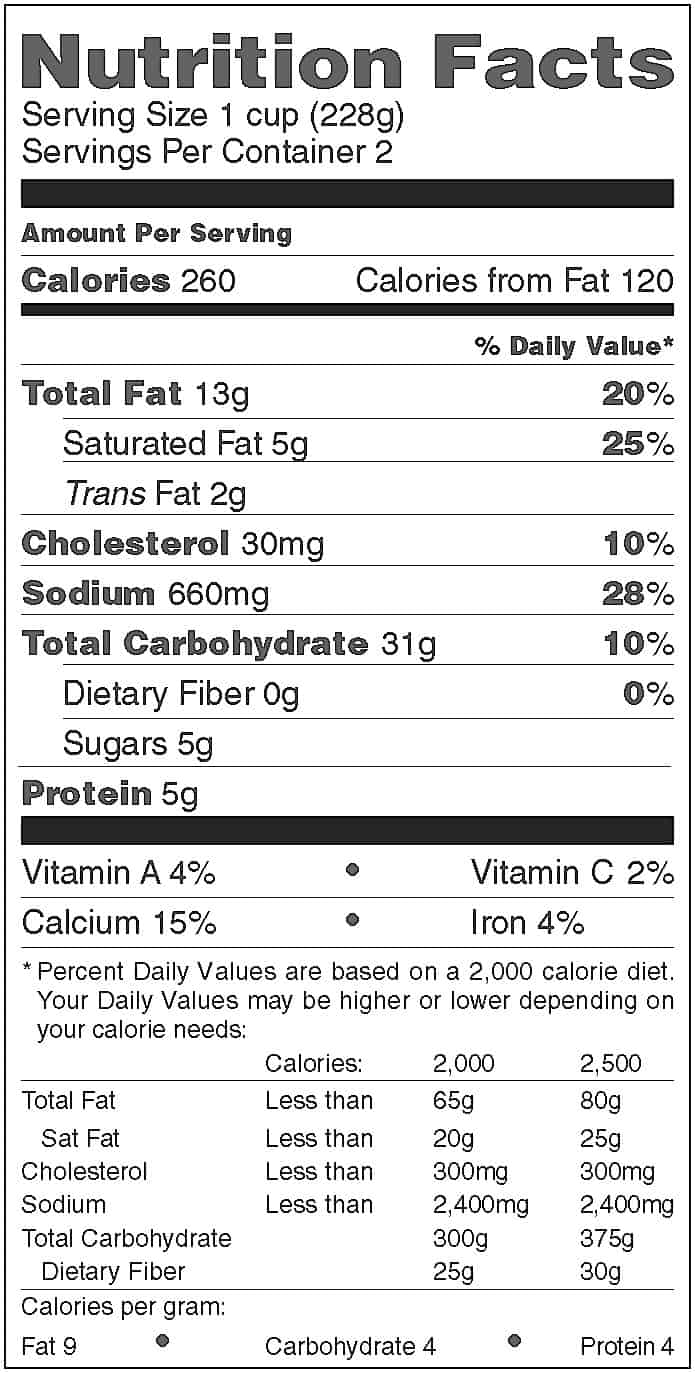
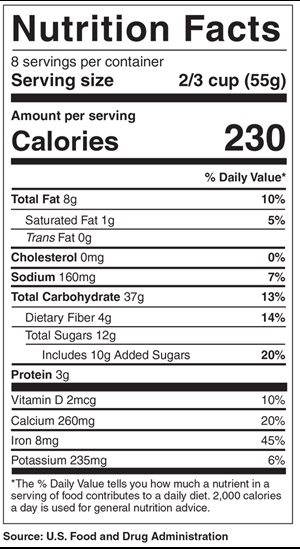

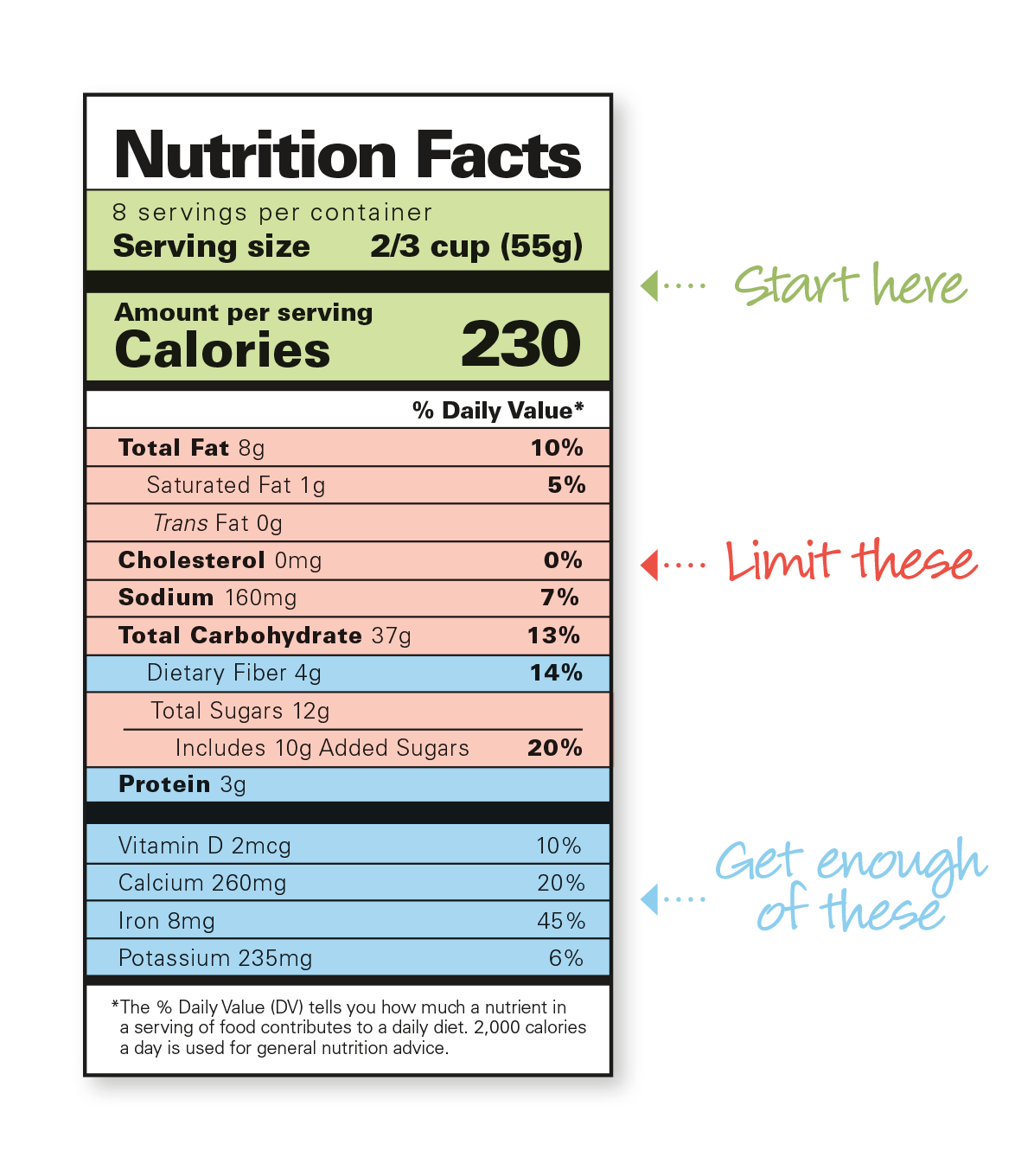
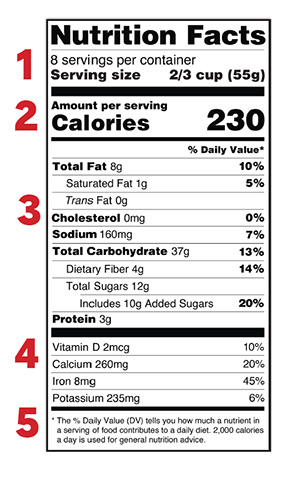


Post a Comment for "42 saturated fat on food labels"